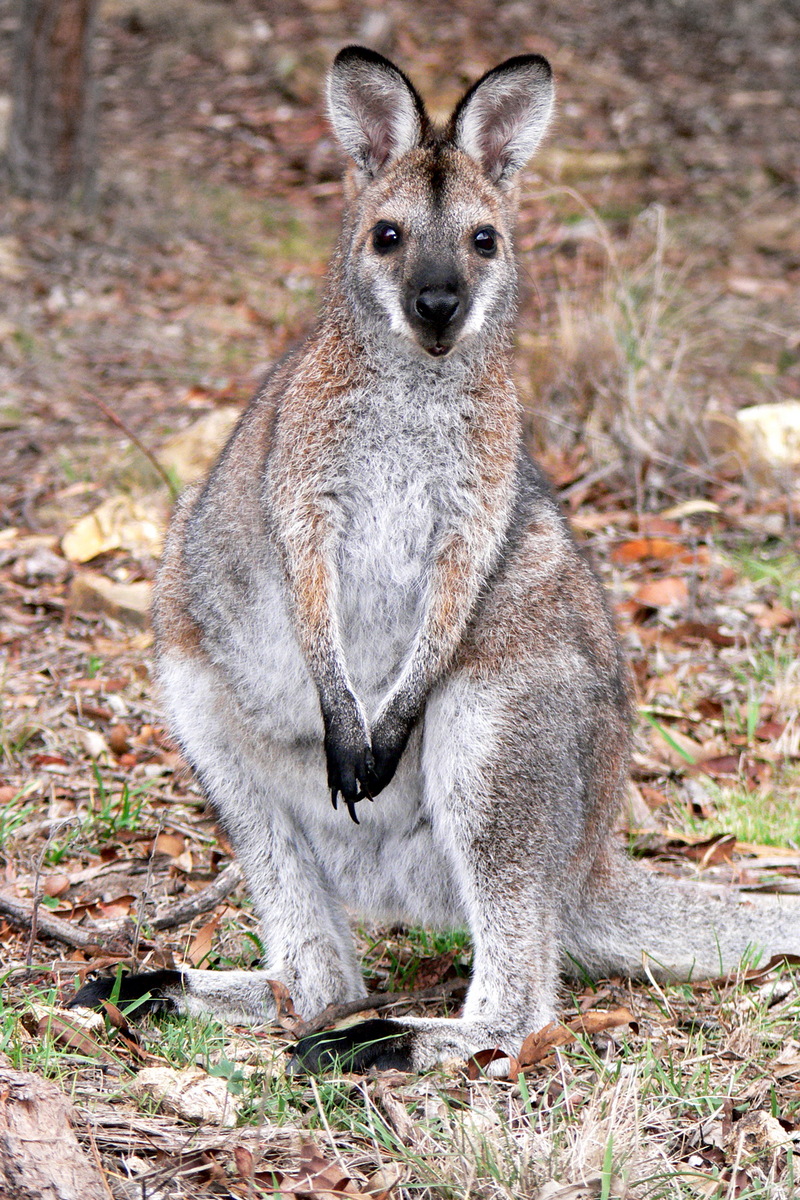Red-necked Wallaby (Macropus rufogriseus) - Wiki Red-necked Wallaby
From Wikipedia, the free encyclopedia
[Photo] A young red-necked wallaby Macropus rufogriseus taken in near Ensay, Victoria, Australia. Taken by benjamint444 http://en.wikipedia.org/wiki/User:benjamint444
The Red-necked Wallaby (Macropus rufogriseus) is a medium-sized macropod, common in the more temperate and fertile parts of eastern Australia. As one of the largest wallabies, it can easily be mistaken for a kangaroo. Males can weigh more than 20 kg and attain a head-body length of 90 cm.
Red-necked Wallabies are distinguished by their black nose and paws, white stripe on the upper lip, and grizzled medium grey coat with a reddish wash across the shoulders.
Red-necked Wallabies are found in coastal scrub and sclerophyll forest throughout coastal and highland eastern Australia, from Rockhampton, Queensland to the South Australian border; in Tasmania and on many of the Bass Strait islands (although it is unclear which of the islands have native populations as opposed to introduced ones).
In Tasmania, north-east New South Wales and coastal Queensland, their numbers have expanded over the past 30 years because of a reduction in hunting pressure and the partial clearing of forest to result in a mosaic of pastures where wallabies can feed at night, alongside bushland where they can shelter by day. For reasons not altogether clear, it is less common in Victoria.
There is a small colony of Red-necked Wallabies on the island of Inchconnachan, Loch Lomond in Scotland. This was founded in 1975 with two pairs taken from Whipsnade Zoo, and had risen to 26 individuals by 1993. There were at one time small colonies in England, in the Peak District and in Ashdown Forest. These are now believed to be locally extinct, though unconfirmed sightings are still reported from time to time.
Like most macropods, the Red-necked Wallaby is largely solitary, although loose groups, known as mobs, often share common feeding areas. They feed at night and, particularly on dull days, in the late afternoon, generally grazing on grass and herbs close to forest shelter.
There are two subspecies. The Tasmanian form, Macropus rufogriseus rufogriseus, also known as Bennett's Wallaby is smaller (as island species nearly always are), has longer, shaggier fur, and breeds in the late summer, mostly between February and April. They have adapted to living in proximity to humans and can be found grazing on lawns in the fringes of Hobart and other urban areas.
The mainland form, Macropus rufogriseus banksianus, breeds all year round. Interestingly, captive animals maintain their breeding schedules; Tasmanian females that become pregnant out of their normal season delaying birth until summer, which can be anything up to eight months later.
http://en.wikipedia.org/wiki/Red-necked_Wallaby
| The text in this page is based on the copyrighted Wikipedia article shown in above URL. It is used under the GNU Free Documentation License. You may redistribute it, verbatim or modified, providing that you comply with the terms of the GFDL. |
